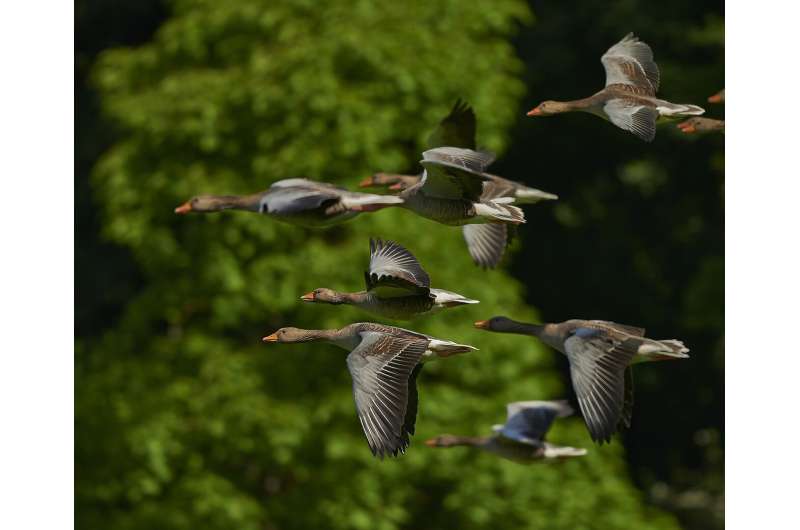Credit: Pixabay/CC0 Public Domain
Animals that migrate "live fast and die young", new research shows.
University of Exeter scientists studied almost 1,300 mammal and bird species and found migrants generally develop faster, produce offspring earlier and die younger than similar, non-migratory species.
The researchers also found that walking and swimming migrants are usually larger than their non-migrating relatives, while flying migrants are smaller.
The findings may partly explain why many migratory species are in decline, as "faster" lives may make them less able to adapt to changes in habitats and the climate—for example, by delaying breeding if conditions are poor.
"Many species migrate over long distances and this requires substantial amounts of energy," said lead author Dr. Andrea Soriano-Redondo.
"This energy cannot be used for other purposes such as self-maintenance or reproduction, so we would expect animals to adjust the amount of energy they use for these things.
"By prioritizing reproduction over survival, 'fast-living' species have the potential to increase numbers more rapidly—which may balance the long-term energy costs and short-term risks of migrating."
The study examined "pace of life" for 1,296 species based on seven measures, including longevity, age at female sexual maturity and how many times a species can attempt to breed each year.
The researchers say their findings will help predict the responses of bird and mammal species to environmental change, and partly explain the decline of many migratory species.
"We have long thought that migration is a risky behavior," said Professor Stuart Bearhop, of the Centre for Ecology and Conservation on Exeter's Penryn Campus in Cornwall.
"Animals often take a chance when they migrate, hoping to find the right conditions in their destination.
"In the case of birds that migrate to the High Arctic, they arrive in spring and have a short window in which to breed.
"Some will only attempt this if conditions are right—and if climate change degrades habitats, these 'fast-living' species might miss their chance entirely."
Professor Dave Hodgson added: "We think that walking and swimming migrants are generally larger because only large animals can store enough energy, and use it efficiently enough, to make long-distance land or sea migrations viable.
"Among flying species, the opposite is true, as a large body mass makes flying more costly in terms of energy."
The paper, published in the journal Nature Communications, is entitled: "Migrant birds and mammals live faster than residents."
More information: Migrant birds and mammals live faster than residents, Nature Communications (2020). DOI: 10.1038/s41467-020-19256-0 , www.nature.com/articles/s41467-020-19256-0
Journal information: Nature Communications
Provided by University of Exeter
























